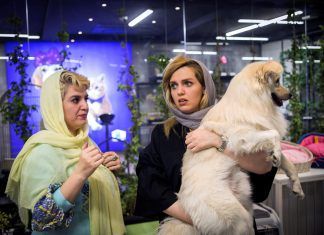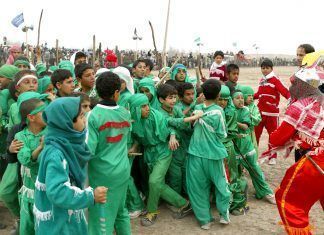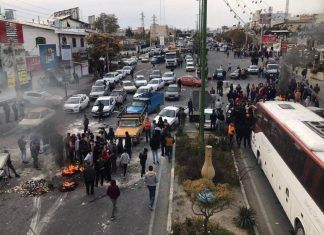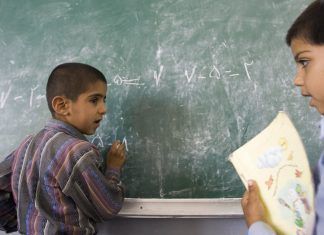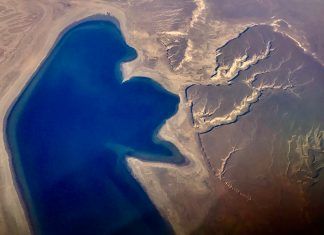Although Iran was slow to detect the spread of the COVID-19 Coronavirus in late January, authorities have led an ongoing battle against the epidemic since discovering the first cases of infection, according to Dr. Ali Akbar Haghdoost, the head of the epidemiology committee of the National Headquarters for Fighting Coronavirus.
Dr. Haghdoost made the comments during a remote video press conference held at the Ministry of Health and Medical Education late last month.
“The virus was creeping undetected through several cities in Iran in late January, with many people showing either no obvious symptoms or being asymptomatic altogether; as a result, we could not identify any cases,” Dr. Haghdoost was quoted by the Islamic Republic News Agency (IRNA) as saying. “Barring any unforeseen developments, we expect to slow down the spread of the disease by late April. We cannot, however, stop the epidemic completely, given we do not know the impact of Nowruz travelers [starting March 20] on the overall number of infections.”
“Southern and western cities have not been affected as severely as other places,” Dr. Haghdoost noted. “The infection has not reached a critical peak. Unless we mitigate the spread of the virus, we expect the disease to peak in these cities. The rate of infection might decline as we get closer to summer and warmer weather.”
[aesop_image img=”https://kayhanlife.com/wp-content/uploads/2020/04/2020-04-02T131955Z_1033993517_RC2DWF9OG44D_RTRMADP_3_HEALTH-CORONAVIRUS-IRAN-scaled.jpg” panorama=”off” credit=”REUTERS./” align=”center” lightbox=”off” captionsrc=”custom” caption=”People wearing protective face mask buy fruits from the shop, amid fear of the coronavirus disease (COVID-19), in Tajrish Bazar inTehran, Iran April 2, 2020. ” captionposition=”left” revealfx=”off” overlay_revealfx=”off”]
“We depend on fact-based models to predict the rate of infection and spread of the disease,” Dr. Haghdoost explained. “The virus would have spread faster and wider if people had not heeded our warnings about shaking hands. People have now stopped shaking hands completely.”
“Coronavirus will remain in our country and the world through the coming summer and beyond,” Dr. Haghdoost warned. “We hope to end the epidemic by this summer and enter the endemic phase of the infection.”
“Tehran has yet to experience the peak of the coronavirus infection. The larger a city, the longer the epidemic,” Dr. Haghdoost added. “Traffic in and around Tehran is heavy, so we doubt very much that the epidemic has reached its peak yet.”
According to Iranian Deputy Health Minister Ghasem Janbabaei, Coronavirus arrived in Iran much later than it did in other countries in the region.
Speaking to reporters on Feb. 19, in the holy city of Qom, where the first cases of infection were recorded, Dr. Janbabaei said: “Luckily, the virus was delayed. Other countries in the region were affected three weeks earlier than Iran. Coronavirus is not deadlier than influenza. Some types of influenza have an even higher death rate than COVID-19. The most important aspect of coronavirus infection is treatment and care.”
“Coronavirus finally found its way to Iran, as we expected,” Dr. Janbabaei noted. “So far, we have only identified two cases that have tested positive, but we need to examine their DNAs. We will inform the public if the tests confirm that they have the virus.”
[aesop_image img=”https://kayhanlife.com/wp-content/uploads/2020/02/2020-02-09T204427Z_59712288_RC28XE9T20X2_RTRMADP_3_IRAN-USA-SOLEIMANI-scaled.jpg” panorama=”off” credit=”REUTERS./” align=”center” lightbox=”off” captionsrc=”custom” caption=”FILE PHOTO: Iranian men chant slogans as they gather to mourn during the forty days memorial, after the killing of Iran’s Quds Force top commander Qassem Soleimani in a U.S. air strike at Baghdad airport, at the grand Mosalla in Qom, Iran February 09, 2020. ” captionposition=”left” revealfx=”off” overlay_revealfx=”off”]
There is very little doubt that the Iranian authorities provided the public with an inaccurate timeline regarding when COVID-19 arrived and spread throughout the country. Also, they have not disclosed the true extent and scale of the epidemic.
According to official figures, the Novel Coronavirus COVID-19 has infected 50,468 people and claimed 3,160 lives in Iran as of April 2. Some people, however, believe the actual number of deaths is much higher than the official figure.
Iran has the sixth-highest number of coronavirus infections in the world after the U.S., Italy, Spain, Germany, China, and France. It also has the sixth-highest number of coronavirus deaths in the world after Italy, Spain, the U.S., France, and China.
While the Iranian public is solidly behind the doctors, nurses, healthcare professionals, medical researchers, paramedics and hospital workers for their heroic efforts to treat the sick at a real risk to their health and safety, they are very skeptical of the government’s plans and efforts to contain the epidemic.
[aesop_image img=”https://kayhanlife.com/wp-content/uploads/2020/04/2020-03-30T165212Z_1853275864_RC2GUF9N9YYX_RTRMADP_3_HEALTH-CORONAVIRUS-IRAN-scaled.jpg” panorama=”off” credit=”REUTERS./” align=”center” lightbox=”off” captionsrc=”custom” caption=”A member of emergency medical staff wearing protective suit, sits in an ambulance while transferring a patient with coronavirus disease (COVID-19) to Masih Daneshvari Hospital, in Tehran, Iran March 30, 2020. ” captionposition=”left” revealfx=”off” overlay_revealfx=”off”]
“The officials must know that they are also affected by this situation,” an unidentified woman wearing a mask said in an undated video clip posted on social media. “They cannot lie to people in these circumstances. They have drivers and workers in their homes. Their children are part of this society. At the least, they must provide accurate information to the public. They must tell the truth.”
“I should not have to pay my monthly cash subsidy of $11 to buy a mask,” the woman added. “At a minimum, they should give everyone free masks.”
[Translated from Persian by Fardine Hamidi]

